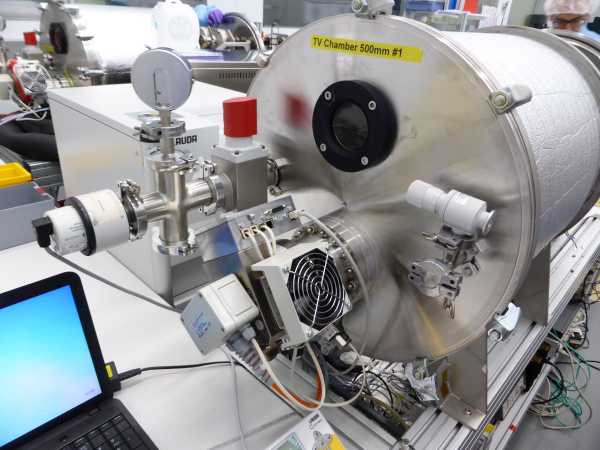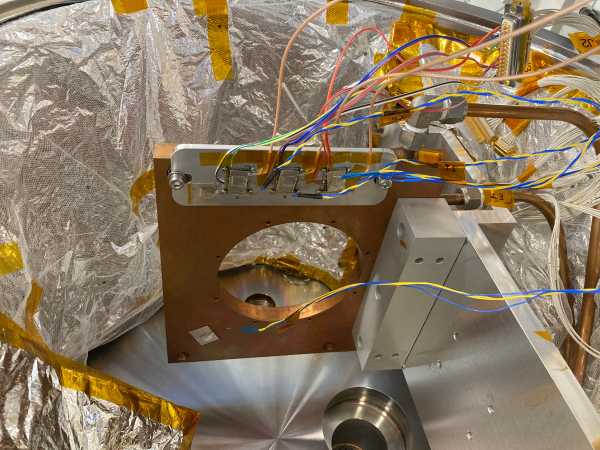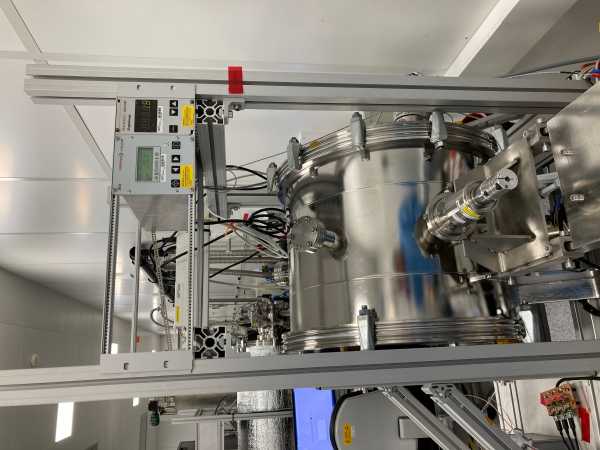Temperature and Vacuum Tests
Temperature and Vacuum Tests at RUAG Space
Overview
Equipment suitable for space operations must not only function well in a harsh radiation environment but are also subject to vacuum and high temperature variations. The u-blox GNSS receivers are built for Earth-bound applications. Especially the high vacuum in space might cause problems by outgassing of the components which, e.g., might lead to cold solder joints or even to the physical destruction of the receiver. A series of environmental tests in a thermal vacuum chamber (TVC) have been conducted at the external page RUAG space facilities in Zurich,
Switzerland.
Three identical u-blox ZED-F9P receivers have been directly mounted on the hot-cold plate of the vacuum chamber. The pressure was reduced to 10-6 mbar which is in the high vacuum range. Then, a series of temperature cycles from -40° to +70° has been driven. A simulated GNSS signal was fed to each receiver under test to assess the receiver performance during the tests.
Results
The most important result of the TVC experiments is that none of the three receivers was destroyed neither from vacuum nor from temperature. The PVT solution of the receivers did not suffer during the experiments, i.e., the receivers performed equally well under vacuum as under normal conditions.



